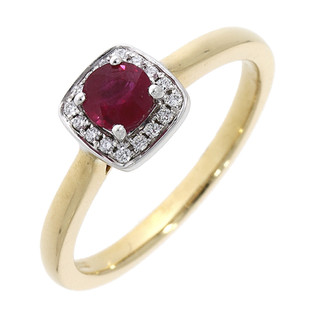An easy guide to buying an engagement ring
- Oliver & J Jewellery
- Jun 15, 2020
- 4 min read
1 – The gemstone:
Why are diamonds usually used in engagement rings?
Diamonds are beautiful and durable and so are associated with everlasting love. A well cut diamond exhibits brilliance and fire as it reflects the light.
The first recorded diamond engagement ring was from Archduke Maximilian of Austria to Mary of Burgundy in 1477. Their popularity increased after encouragement by the De Beers Company, who coined the popular slogan ‘A Diamond is Forever’ in 1948.
Diamonds are the hardest of all the gemstones. The name diamond comes from the Greek ‘adamas’ which means unconquerable. They are the least likely gemstone to scratch and so can tolerate most daily activities without damage.
What is the importance of the ‘4 Cs’?
The 4 Cs are how diamonds are graded and hence priced:
· Carat - the size of the diamond
· Colour – the most colourless and most expensive diamonds are graded D and are graded up to slightly yellow at Z (there is no A, B, or C!)
· Clarity – the number of dark flecks (known as inclusions) seen in or on the diamond. This ranges from ‘flawless’ to ‘included’ where you can see dark spots in the diamond
· Cut – the quality of the diamond proportions. This is different to the shape of the diamond
All these Cs are important but I would say that the most often overlooked is the Cut.
A well-cut diamond maximizes the reflection of light to give brilliance and fire when you look at the stone. It gives the diamond its dazzle.
A poorly cut diamond might look bigger in diameter or weigh more in carats but it will look dull and have no sparkle.
As a general rule with regards to Colour, most people will see the top three grades D, E, and F as equally colourless. By the letter H, a very slight yellowing can be seen although this is less important if the diamond is being set into yellow gold. Prices are considerably higher at D so consider how important this is to you.

Clarity is assessed using magnification (we use a jeweller’s loupe) but to the naked eye, it can be difficult to see any dark flecks until the lower grades I (‘included’). It’s a good idea is to look carefully at the diamond yourself in a good light. How does it look to you?

Finally the size or Carat. The larger diamonds are rarer and are more expensive. A large diamond will tend to highlight a poor cut and it can be easier to see inclusions within the diamond.
The average size of engagement ring in the UK is half a carat otherwise known as 50 points (100 points is a carat). How big a diamond looks also depends on the ring design: a diamond will look larger with a surrounding halo of smaller diamonds around it.
One word of caution if you’re considering diamonds on the ring itself (the shoulders) - these rings can be difficult to make much bigger or smaller so you need to buy the right ring size or close to it.
We are always happy to check your finger size or the size of a ring that fits.
Can diamonds be damaged by wear?
Yes – they can be chipped or even broken by sudden impacts such as hard knocks. We suggest that your diamond rings are removed before hard manual work or where you might hit the ring with force.
And regular cleaning will keep your diamond sparkling.
Which other gemstones could be used?
This is very much a matter of personal taste. It is definitely worth considering the hardness and durability of the gemstone.
The two next gemstones in terms of hardness (though they are considerably less hard than diamonds) are sapphires and rubies. Sapphires can occur in many colours and are all the same hardness. When they are coloured red – they are called rubies!
The hardness of gemstones can be checked using the Moh’s scale of hardness (numbered 1 – 10) but be aware that there is a very big difference between each number and some gemstones have a greater tendency to chip or crack.
That isn’t to say that you can’t use a softer gemstone – but you should be willing to take off the ring for daily normal chores.
What shaped gemstone should I get?
Most people choose round brilliant single stone rings (solitaires) but there is a wide range of stone shapes and designs to suit everyone. We have a range of different styles of engagement rings in our shop, and we can help you decide which engagement ring is best for you.

2 – The Metal:
The most popular choices of metal are gold (yellow, white and rose in 9ct or 18ct) or platinum.
White gold is usually plated with the metal rhodium and will require re-plating every 1 to 2 years depending on wear. If un-plated, the white gold will show a yellow tinge with time.
Yellow gold is becoming more popular partly because of changing tastes and partly because it is not plated. It can easily be polished if it becomes scratched with wear.
Rose gold is similar to yellow gold and is not plated.
Platinum is a naturally occurring white metal. It is rarer than gold and more durable. It was considered to be the expensive option but this is no longer the case as gold prices have
risen.

Ideally, an engagement ring will be worn everyday and for many years.
When looking at a ring, try to feel the weight of the ring in your hand. Check the inside of the ring – is it solid or hollow? A solid ring will usually be stronger.
And finally

















Comments